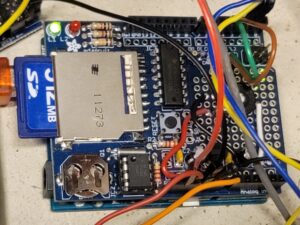— Work in Progress —
I am evaluating range, sensitivity, immunity from false triggering, and power requirements, for various projects around the house. In particular, I would like to be notified when a person or a vehicle comes down my driveway, so I can light the way if it’s dark.
Sensors Considered
- Passive Infrared (PIR)
- AM312 3.3 or 5V, active low
- SB0072 Futurelec MINI_PIR_MOD_B 5-20V, adjustable delay time
- Microwave Doppler
- RCWL-0516
- RCWL-9192
- Ultrasonic (SONAR)
TLDR;
PIR produces many false triggers with sunlight and moving foliage.
Microwave Doppler is pretty short-range
Ultrasonic is pretty short-range
Testing
Passive Infrared (PIR)
Microwave Doppler
Ultrasonic (SONAR) – RCWL-1655
Range: Quoted as up to 5 meters; detects humans up to about 1.5 meters
Immunity from false triggering: Once I filtered out zero-responses, I only see false triggering when there is a target too small or too far away to reliably register.
Power requirements: Currently testing with a 1500 mAh LiPo battery; started the test on 2024-09-22 at 21:00 or so.
Test routine:
- take a reading “ping”
- if result is different than before, take repeated readings until two in a row match within 10%
- if this new “clean” reading is different than before, report it with a JSON message transmitted via LoRa
- sleep for 0.25 seconds (originally 1 second). Since the processing takes 120ms or so, sleeping for 250ms cuts power consumption by perhaps two thirds.





